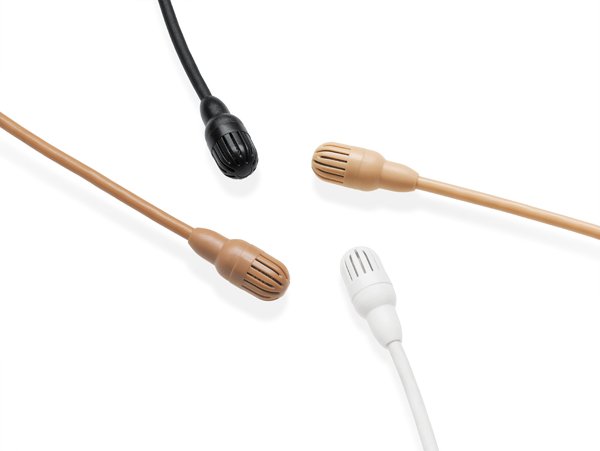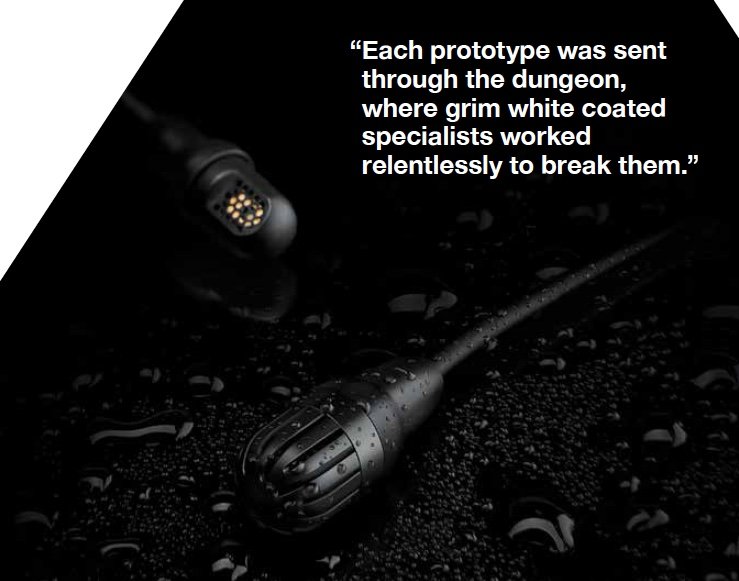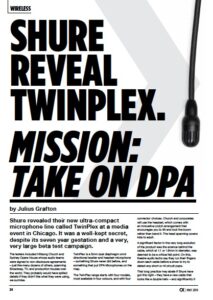News
10 Apr 2019
Shure reveal Twinplex. Mission: take on DPA

Subscribe to CX E-News
WIRELESS
Shure reveal Twinplex. Mission: take on DPA
by Julius Grafton.
Shure revealed their new ultra-compact microphone line called TwinPlex at a media event in Chicago. It was a well-kept secret, despite its seven year gestation and a very, very large beta test campaign.
The testers included Hillsong Church and Sydney Opera House whose audio teams were signed to non-disclosure agreements – just like many dozens of others, spanning Broadway, TV, and production houses over the world. They probably would have spilled details if they didn’t like what they were using, we surmise.
TwinPlex is a 5mm dual diaphragm omni directional lavalier and headset microphone – something Shure never did before, and something that put DPA Microphones on the map.
The TwinPlex range starts with four models, most available in four colours, and with four connector choices. Church and corporates will use the headset, which comes with an innovative clutch arrangement that encourages you to tilt and lock the boom rather than bend it. The head spanning covers kids to adult.
A significant factor in the very long evolution of the product was the science behind the cable, which at 1.1 or 1.6mm in diameter, was deemed to be a critical fail point. On this, theatre audio techs say they run their fingers down each cable before a show to try to detect any short or nil circuit pops.
That long practice may abate if Shure have got this right – they have a new cable that looks like a double helix – and significantly it carries two earth paths. Mating that cable to the 5mm microphone element was a big part of the development agony.
Each prototype was sent through the dungeon, where grim white coated specialists worked relentlessly to break them. Machines twisted the cables endlessly. Elements were introduced to the SweatBOT, a chamber where artificial sweat (Shure buy the stuff by the barrel) was smothered over.
The engineers identified a bunch of key issues with development – firstly just making the microphone element, itself so small. The microscopic processes and almost nano-scaled circuit board came together with acquired and internal knowledge at the modern seven story design campus in Niles, near Chicago city.
Cable technology eventually won out with a design that did not fail after 120,000 flexes in the dungeon machine. Shure point out that this is ten times better than their (at that stage in the presentation) competition. But we all knew who that was – DPA, and Sennheiser who do well with the MKE2. We’re not warranting Shure’s cable reliability claims, just reporting what they say.
Another issue of design intention was how to voice the product. Shure have 90+ years of experience there. They ended up shooting for something close to the curves that DPA deploy. More on that shortly.
The dual diaphragm concept is not the same as the KSM8 – Shure’s most recent dual diaphragm design which features one active and one passive diaphragm. Instead, the TwinPlex offers dual diaphragms engineered for better dynamic range and lower cable noise.
In Use
Shure rolled out some Beta testers, who spoke of their experiences. A sports broadcaster spoke of deploying the TwinPlex on the backboard at basketball, where it captures the swoosh of the ball through the net, and/or the thunk on the backboard.
“It gave me immense low end, never available before.”
He also buried a TwinPlex with a new miniature beltpack from the Axient digital wireless range, the ADX1M that has an internal antenna, in the turf in a baseball field. ‘You make a slit on the grass, and burrow that down there.’
His other use was to mic the net near the goalie in soccer. These soundscapes are recently a big thing in pro sport audio.
Another new trick is to shove a TwinPlex into the cup of a golf hole! At the Golf Masters he had TwinPlex and beltpacks all over, and ended up getting accolades for the sound of flocks of birds. Apparently, some broadcast engineers sometimes cheat this by adding in bird noises – until they are caught out by serious bird people calling that the bird noises they insert are not a native species. Serious people, these bird people.
Shure say the TwinPlex is ‘resilient to water’, with the cap designed to wick away and keep the element less clogged. They concede sweat is a big issue for some users.
We bussed over to the Chicago Shakespeare on Navy Pier Theatre, to have a real demo with several performers who spoke lines and sung to a backing. The performers wore a DPA 4061 and a TwinPlex, each in their hairline, and each (obviously) with its own beltpack.
This demo had the engineer switch between Shure and DPA, following a script. An assistant held up a sign to show which mic was in use. Due to the close proximity of the performers and the acoustics of the venue, it was very hard to hear differences between the two.
Sound designer Ray Nardelli told me later that he was a beta tester of TwinPlex, and that until now his preference was to use DPA on females due to better high frequency performance, and Sennheiser MKE2 on guys, because ‘it has better chest sound’. He says he will now standardize on the Shure TwinPlex.
He also spoke of testing Twinplex in tap shoes, which is given to be a very hostile environment for a little microphone. (Also for feet, we suspect.)
The head of sound at the theatre spoke of the attrition rate of miniature microphones, which they have measured over many seasons of musicals. As a regional theatre, they notice each $500 replacement and they have hopes the Shure TwinPlex will be better.
Overall given the amazing development evolution, and breadth of the beta testing campaign, Shure look to be plugging a gap in their lineup with the TwinPlex. It offers a price advantage of about 20% over the Europeans. It should match them for spit, cable flex breaks and durability. Plus it is grown and nurtured over many years in the United States.
That helps.
CX Magazine – May 2019 Entertainment technology news and issues for Australia and New Zealand – in print and free online www.cxnetwork.
© CX Media
Further reading from CX Magazine’s Wireless Feature – May 2019:
Shure Reveal Twinplex. Mission: Take on DPA – by Julius Grafton
Wireless Voodoo – Not a Dark Art – by Fraser Walker
In-Ear Monitoring – by Sennheiser’s Adam Karolewski
Clear-Com FreeSpeak II – by The P.A. People’s Chris Dodds
Signal Out of the Noise – by Simon Byrne
Is that a wireless intercom in your pocket? – by Jand’s Jeff MacKenzie
Antennas for Wireless Microphones – by Jand’s Jeff MacKenzie
The Politics of Wireless – by Simon Byrne
Wireless Recordings – by Andy Stewart
From the archive – Wireless Mics were a feature in Connections Magazine, March 1999:
Radio Microphones (Sub-titled “How Did I Get Stuck With This Job!”) by John Matheson (includes a wireless systems Buyers Guide and Radio Spectrum Guide for Australia)
Subscribe
Published monthly since 1991, our famous AV industry magazine is free for download or pay for print. Subscribers also receive CX News, our free weekly email with the latest industry news and jobs.








